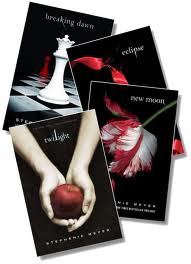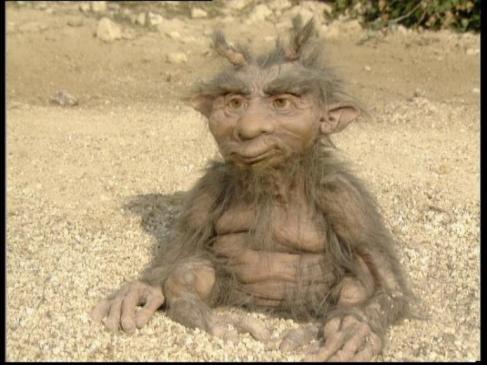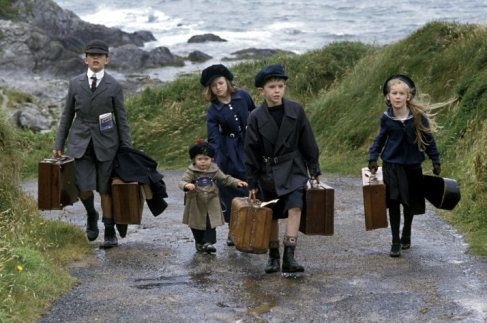It is safe to say that we all, at the very least, have enjoyed our reading of Nesbit’s Five Children and It. As we discussed in class, there may be an argument that Nesbit’s treasure chest of ideas were savaged from other writers’ works, and therefore may be perceived as “unoriginal.” Whether or not someone comes to this conclusion, Five Children and It remains a fun-filled children’s story structured with moral-encompassing instances and situations, all intertwined with adventure and imagination; broadly speaking, this is why we love and enjoy Nesbit’s story so much, but there are a plentiful more reasons why.
What this book does good at — if not best — is constructing one’s intolerance for wishes. Just about every wish the children make ends up putting them in troublesome circumstances in which they then must find ways of hiding or suppressing the wished items, which is necessary in preventing very real consequences such as jail time, death, starvation, etc. By the end of the story, the reader — like our heroines — is exhausted due to the children’s constant struggle to cover up the unintended results of their wishes (all while dealing with having to stay fed). In a genre of fiction where a child would dream of being submerged in a reality where some one/two/three wishes have the possibility of being granted, ‘wish granting’ in Five Children and It becomes one’s seemingly worst nightmare, thus Nesbit does well in suppressing the reader’s tendencies of wishful thinking.
The ‘consequences associated with wishing’ is a successful lesson to be learned in Nesbit’s story, and it is the main motif that the story builds upon, thus allowing the development of the children’s many adventures (inevitably providing for a some 200-page story). But what this motif further offers us are underlying values, such as the importance of family (as seen in the instance where the Lamb is suddenly wanted by everybody, and is nearly kidnapped from his siblings on several occasions — if it had not been for their smart thinking; the children soon realize how important their brother is to them in hindsight to his ever being lost) and further the value in necessity over greed (as demonstrated when the children seek beauty, riches, and wings, among other things, and then suffer in the absence of food; nutrition being the most fundamental, vital, and important item for their well-being — rather than unnecessary items of greed).

Therefore, it is not just the adventures in Five Children and It that we love and enjoy so much, it is also the building upon (or the learning experiences surrounding) these central morals.
Nevertheless, it is the adventures that we first and foremost love, wouldn’t you agree? And how wonderful they are! Mighty appealing to any child, I might add: the unorthodox inclusion of a monster-like fur-ball-of-a-fairy that speaks perfect English and once lived in the dinosaur age; the children’s becoming as beautiful as the day, but then going unnoticed by all those closest to them; their becoming rich with money that the townspeople, as they later learn, are unlikely to accept in transaction — also arising suspicions that could put them in jail; the children’s being granted beautiful wings and flying over rooftops only to fall victim to hunger and winding up stuck atop a church after losing their wings to the sunset; their defending a home-made castle from an invasion of colorful medieval warriors brandishing an assortment of deadly sharp weapons; Robert’s becoming of a giant and joining a fair as to make a short-lived profit — then having to devise a plan with Cyril in order to escape unharmed and unnoticed due to the giant-magic diminishing at sunset; and so on and so forth.

What makes this so appealing to a children audience?
Primarily, the very ambiguity, excitement, and thrill associated with the aspect of adventure. Also, the reader’s relatability and connection with the text (in this case, a child audience).
A child is neither completely good nor completely bad, which is quite evident in the characters of our heroines who exhibit thoughts, feelings, and emotions on both sides of the spectrum. Nesbit’s perception of a child is much different to that of the Victorian ‘ideal’ child; Nesbit details a more realistic version of the child — a common literary practice in the Edwardian period that begins (roughly) in the year 1901; it so happens to be that Five Children and It was first published the year after, in 1902, thus it could be argued that Nesbit had set the stone for (or aided in the development of) the Edwardian-Era image of the child.
With that said, the child reader is more likely to relate to our heroines if the characters are, in fact, actual (rather than perceived) children, increasing the legitimacy of the story — as if the story itself was written by a child. And as I noted above, a child is at most only ‘mostly good,’ and the adventures that entail our (cunning) heroines who, like actual children, steal, lie, sugar-coat, manipulate, fight, and escape trouble, among many other things, become believable in the sense that their involvement in fantastical matters are almost overlooked because they, themselves, are not the least bit made up. As we discussed in class, Nesbit gives fantasy a realistic reality by including close-to-home places and conventions of society; this, combined with the presence of ‘actual’ children rather than the ‘ideal’, makes this story evermore believable — enjoyable — to a child audience. When fantasy is made every effort to be written as believable, we, the readers, are more likely to submerge ourselves into the framework of the story, and forget most — if not all — of our knowledge of reality. Isn’t this why we read books in the first place? For an escape of reality with characters and places we can relate to on an emotional, relatable level? This holds true even for the child reader of a children’s book.

There are perhaps a hundred or more reasons I could formulate as to why Five Children and It is such an enjoyable read to all who come across it. Personally, and quite obviously, I have enjoyed this book very much so, and I am privileged to have been given this opportunity to discover its many morals and adventures, and to behold the most realistic portrayal of children I have seen yet. I will, most certainly, be reading this to my children one distant and delightful day.



















